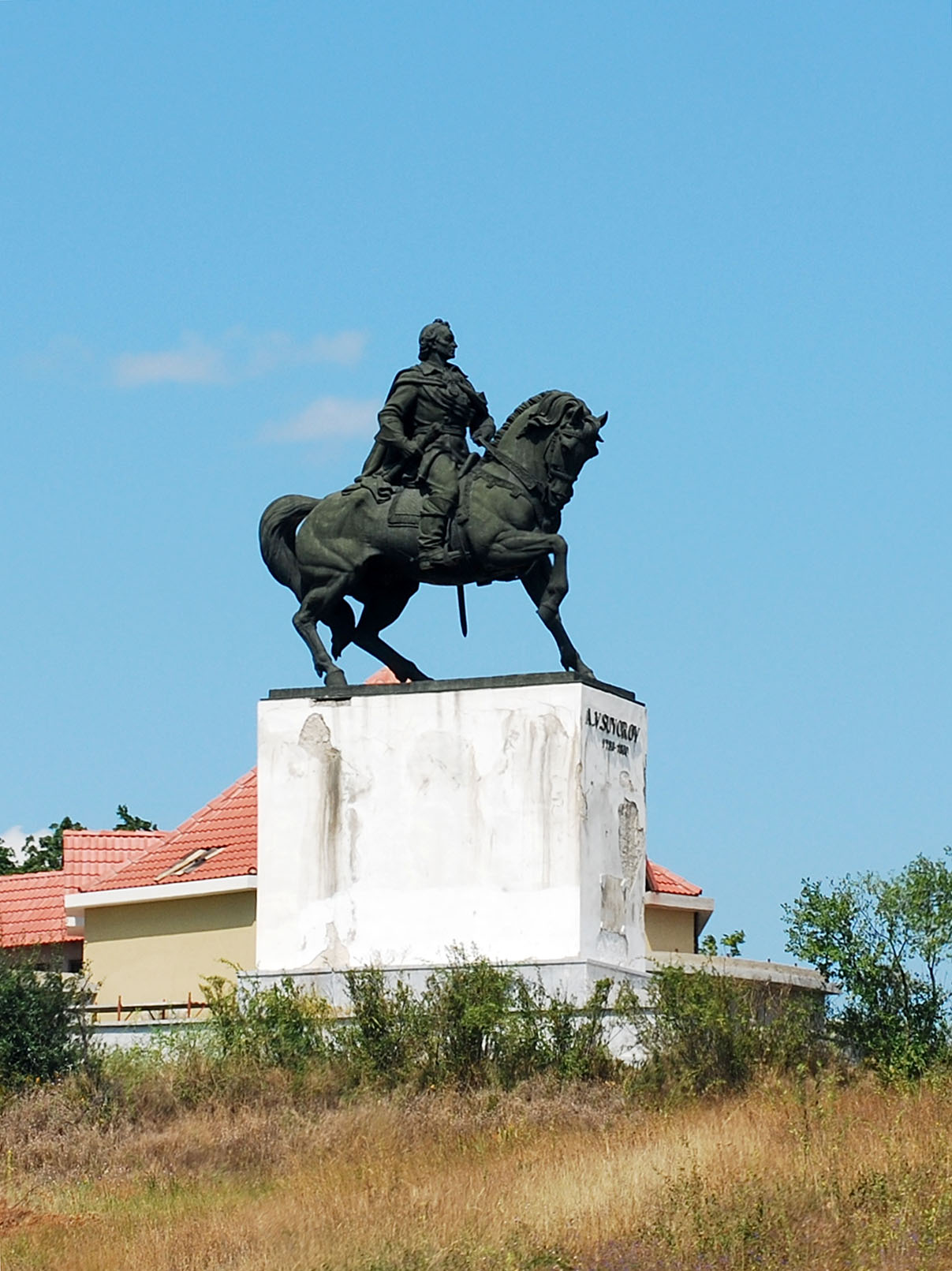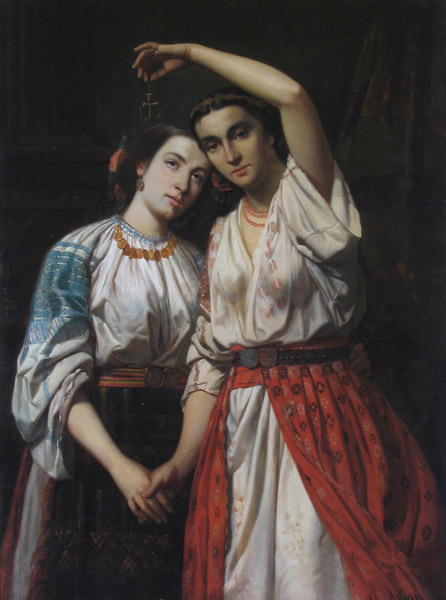|
Gologanu, Vrancea
Gologanu is a commune located in Vrancea County, Romania. It is composed of a single village, Gologanu, and was part of Milcovul commune from 1968 until 2004, when it split off. Geography The commune is located in the southeastern part of the county, on the banks of the river Râmna. Gologanu is crossed by national road , which connects it to the county seat, Focșani, to the northeast. It neighbors the following communes: Milcovul to the north, Tătăranu to the south, Răstoaca to the east, and Slobozia Ciorăști to the west. History At the end of the 19th century, the commune was part of '' plasa'' Marginea de Sus of Râmnicu Sărat County; it consisted of the villages of Gologanu and Vlădulești, with a population of 1,570 inhabitants. A church built in 1859 and a school with 53 students established in 1880 functioned in the commune. The Socec yearbook recorded the commune in the same composition (the village of Vlădulești was then called Vlăduleasa), in ''plasa'' Cote� ... [...More Info...] [...Related Items...] OR: [Wikipedia] [Google] [Baidu] |
Commune In Romania
A commune (''comună'' in Romanian language, Romanian) is the lowest level of administrative subdivision in Romania. There are 2,686 communes in Romania. The commune is the rural subdivision of a Counties of Romania, county. Urban areas, such as towns and cities within a county, are given the status of ''Cities in Romania, city'' or ''Municipality in Romania, municipality''. In principle, a commune can contain any size population, but in practice, when a commune becomes relatively urbanised and exceeds approximately 10,000 residents, it is usually granted city status. Although cities are on the same administrative level as communes, their local governments are structured in a way that gives them more power. Some urban or semi-urban areas of fewer than 10,000 inhabitants have also been given city status. Each commune is administered by a mayor (''primar'' in Romanian). A commune is made up of one or more villages which do not themselves have an administrative function. Communes ... [...More Info...] [...Related Items...] OR: [Wikipedia] [Google] [Baidu] |
Vrancea County
Vrancea () is a county (județ) in Romania, with its seat at Focșani. It is mostly in the historical region of Moldavia but the southern part, below the Milcov (Siret), Milcov River, is in Muntenia. Demographics At the 2021 Romanian census, 2021 census, the county had a population of 335,312 and a population density of . * Romanians – over 98% * Romani people in Romania, Romani, Minorities of Romania, others – 2%. Geography Vrancea County covers an area of . A curvedly shaped mountainous area, known in Romanian as the ''Sub Carpathians, Carpații de Curbură'', lies in the western part of the county, at the Southern end of the Eastern Carpathians, with heights over . To the East, the heights decrease into hilly areas and the lower valley of the Siret (river), Siret River. The main tributary of the Siret, which crosses the county, is the Putna (Siret), Putna River. A right tributary of the Putna is the Milcov (Siret), Milcov, a river that divides Moldavia from Munteni ... [...More Info...] [...Related Items...] OR: [Wikipedia] [Google] [Baidu] |
Romania
Romania is a country located at the crossroads of Central Europe, Central, Eastern Europe, Eastern and Southeast Europe. It borders Ukraine to the north and east, Hungary to the west, Serbia to the southwest, Bulgaria to the south, Moldova to the east, and the Black Sea to the southeast. It has a mainly continental climate, and an area of with a population of 19 million people. Romania is the List of European countries by area, twelfth-largest country in Europe and the List of European Union member states by population, sixth-most populous member state of the European Union. Europe's second-longest river, the Danube, empties into the Danube Delta in the southeast of the country. The Carpathian Mountains cross Romania from the north to the southwest and include Moldoveanu Peak, at an altitude of . Bucharest is the country's Bucharest metropolitan area, largest urban area and Economy of Romania, financial centre. Other major urban centers, urban areas include Cluj-Napoca, Timiș ... [...More Info...] [...Related Items...] OR: [Wikipedia] [Google] [Baidu] |
Milcovul
Milcovul (called Risipiți until 1964) is a commune in Vrancea County, Romania. It is located in the historical region of Muntenia. It is composed of two villages, Lămotești and Milcovul, and also included Gologanu and Răstoaca from 1968, until these became separate communes again in 2004. The commune is situated in the northern reaches of the Wallachian Plain, on the banks of the Milcov River. It is located in the southeastern part of Vrancea County, southeast of the county seat, Focșani; its other neighbors are the following communes: Răstoaca to the northeast, Gologanu to the south, and Slobozia Ciorăști to the southwest. Milcovul is crossed by national road , which connects Focșani to Ciorăști. In 1227 Milcov became the seat of the Diocese of Cumania, a Roman Catholic bishopric which served the Cumans and the Teutonic Knights in the Burzenland. The diocese was destroyed during the Mongol invasion of Europe From the 1220s to the 1240s, the Mongol Empire, ... [...More Info...] [...Related Items...] OR: [Wikipedia] [Google] [Baidu] |
Râmna (Putna)
The Râmna is a right tributary of the river Putna in Romania.Ovidiu Gabor - , map page 10 It discharges into the Putna near Răstoaca Răstoaca is a commune located in Vrancea County, Romania. It is composed of a single village, Răstoaca, and was part of Milcovul commune from 1968 until 2004, when it was split off. The commune is located in the southern part of the county, .... Its length is and its basin size is . References Rivers of Romania Rivers of Vrancea County {{Vrancea-river-stub ... [...More Info...] [...Related Items...] OR: [Wikipedia] [Google] [Baidu] |
Roads In Romania
Public roads in Romania are ranked according to importance and traffic as follows: *motorways (autostradă – pl. autostrăzi) – colour: green; designation: A followed by one or two digits *expressways (drum – pl. drumuri express) – colour: red; designation: DEx followed by one or two digits and an optional letter *national road (drum național – pl. drumuri naționale) – colour: red; designation: DN followed by one or two digits and an optional letter *county road (drum județean – pl. drumuri județene) – colour: blue; designation: DJ followed by three digits and an optional letter; unique numbers per county *local road (drum – pl. drumuri comunale) – colour: yellow; designated DC followed by a number and an optional letter; unique numbers per county Some of the national roads are part of the European route scheme. European routes passing through Romania: E58; E60; E70; E85; E79; E81; E68; E87 (Class A); E574; E576; E581; E583; E671; E771. ... [...More Info...] [...Related Items...] OR: [Wikipedia] [Google] [Baidu] |
Focșani
Focșani (; ) is the capital city of Vrancea County in Romania on the banks the river Milcov, in the historical region of Moldavia. , it has a population of 66,719. Geography Focșani lies at the foot of the Curvature Carpathians, at a point of convergence for tectonic geologic faults, which raises the risk of earthquakes in the vicinity. Though Vrancea County is one of the most popular wine-producing regions in Romania, Odobești being just to the northwest, in Romania, Focșani itself is not considered a wine-producing center. The wine sold as ''Weisse von Fokshan'' in Germany and some other European countries is generally a ''Fetească Albă de Odobești'' wine, and practically a second-rated wine which does not comply to the European Union rules of naming the regions of origin of wines. The vicinity is rich in minerals such as iron, copper, coal, and petroleum. The city administers two villages, Mândrești-Moldova and Mândrești-Munteni. Focșani lies within the strate ... [...More Info...] [...Related Items...] OR: [Wikipedia] [Google] [Baidu] |
Tătăranu
Tătăranu is a commune located in Vrancea County, Romania Romania is a country located at the crossroads of Central Europe, Central, Eastern Europe, Eastern and Southeast Europe. It borders Ukraine to the north and east, Hungary to the west, Serbia to the southwest, Bulgaria to the south, Moldova to .... It is composed of five villages: Bordeasca Nouă, Bordeasca Veche, Mărtinești, Tătăranu, and Vâjâitoarea. The commune is located in the southeastern part of the county, on the banks of the Râmnicul Sărat River. References Communes in Vrancea County Localities in Muntenia {{Vrancea-geo-stub ... [...More Info...] [...Related Items...] OR: [Wikipedia] [Google] [Baidu] |
Răstoaca
Răstoaca is a commune located in Vrancea County, Romania. It is composed of a single village, Răstoaca, and was part of Milcovul commune from 1968 until 2004, when it was split off. The commune is located in the southern part of the county, southeast of the county seat, Focșani. History In December 1957–January 1958, during the Communist era, the peasants from Răstoaca and nearby Suraia and Vadu Roșca resisted the collectivization of agriculture. At one time, several dozen men from Răstoaca attacked a convoy of Communist Party members; the convoy, which included Nicolae Ceaușescu, had come to convince the locals to join in the collectivization effort. Several peasants from the area who revolted were shot; 73 were tried and sentenced to long prison terms. Memorialist Florin Pavlovici witnessed how 30–40 men from Răstoaca were sent to the Periprava labor camp in the Danube Delta; according to Andrei Muraru, head of the Institute for the Investigation of Communi ... [...More Info...] [...Related Items...] OR: [Wikipedia] [Google] [Baidu] |
Slobozia Ciorăști
Slobozia Ciorăști is a commune located in Vrancea County, Romania Romania is a country located at the crossroads of Central Europe, Central, Eastern Europe, Eastern and Southeast Europe. It borders Ukraine to the north and east, Hungary to the west, Serbia to the southwest, Bulgaria to the south, Moldova to .... It is composed of three villages: Armeni, Jiliște, and Slobozia Ciorăști. References Communes in Vrancea County Localities in Muntenia {{Vrancea-geo-stub ... [...More Info...] [...Related Items...] OR: [Wikipedia] [Google] [Baidu] |
Plasă
''Plasă'' (, plural ''plăși'' ) was a territorial division unit of Romania, ranking below county ('' județ'') and above commune. It was headed by a '' Pretor'', appointed by the county Prefect. The institution headed by the Pretor was called ''Pretură''. The division of counties into ''plăși'' was used starting from the rule of Carol I as '' Domnitor'', throughout the existence of a Romanian Kingdom, and during the first two years of the Romanian People's Republic, until they were replaced in 1950 by raions, following the Soviet The Union of Soviet Socialist Republics. (USSR), commonly known as the Soviet Union, was a List of former transcontinental countries#Since 1700, transcontinental country that spanned much of Eurasia from 1922 until Dissolution of the Soviet ... system. In 1938, the country's 71 ''județe'' were divided into 429 ''plăși''. Petre Mihai Băcanu"Cum ar trebui să arate harta redesenată a României?" March 11, 2010; accessed February 17, ... [...More Info...] [...Related Items...] OR: [Wikipedia] [Google] [Baidu] |
Râmnicu Sărat County
Râmnicu Sărat County is one of the historic counties of Muntenia, Romania. The county seat was Râmnicu Sărat. Geography Râmnicu Sărat County covered 3,324 km2 and was located in central-south-eastern part of Greater Romania, in the northeastern part of the historical region of Muntenia. Currently, the territory that comprised Râmnicu Sărat County is now included in the Brăila, Buzău and Vrancea counties. In the interwar period, the county neighbored Putna and Tecuci counties to the north, Covurlui County to the east, Brăila County to the southeast, and Buzău County to the southwest. History Slam Râmnic County (the old name of Râmnicu Sărat County) dates back to the period of the medieval organization of Wallachia. At first, the county's seat was at Focșanii Munteni, located on the right bank of the Milcov River, separating it from the city of Focșani proper that belonged to Moldavia. In 1542, when the Ottoman Empire annexed Brăila and its surrounding ar ... [...More Info...] [...Related Items...] OR: [Wikipedia] [Google] [Baidu] |



